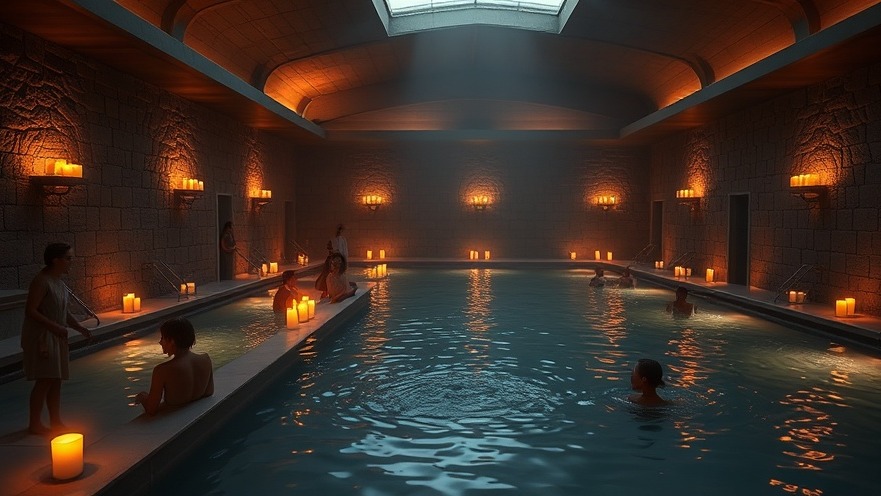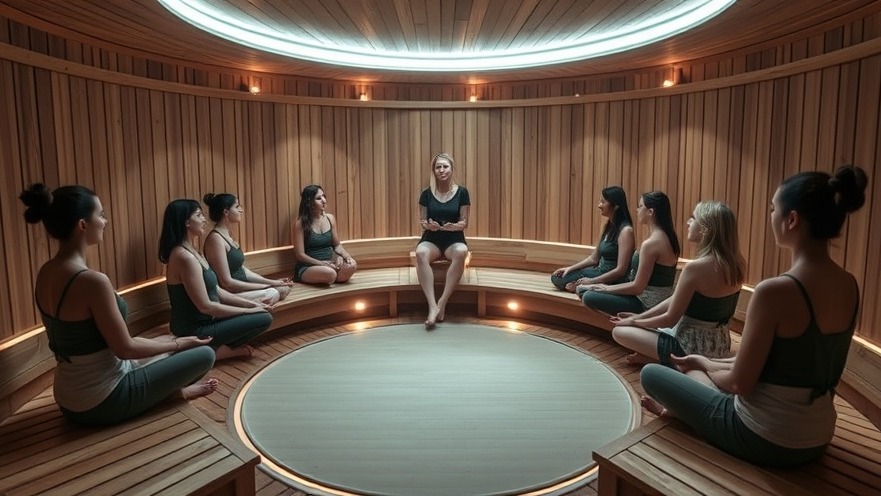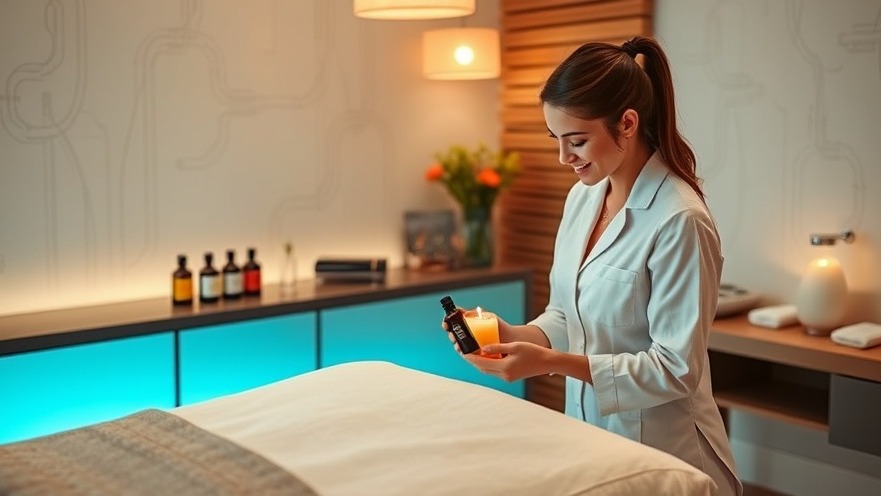
Step Into a New World of Spa Experiences
Imagine walking into a sauna where the air shimmers with scented steam, soft lights ripple like waves across the ceiling, and a guide’s voice invites you to let go of the outside world.
This isn’t the quiet, solitary spa visit many of us picture — it’s part performance, part ritual, and entirely immersive. Across the country, spas are moving beyond simple background music and essential oils to create experiences that engage every sense.
From theatrical sauna shows that feel like wellness concerts to ice-bath classes guided by breathwork and rhythm, a new wave of multi-sensory experiences is reshaping how people think about relaxation.
“We’re not just helping people unwind,” says Robbie Bent, co-founder of Othership. “We’re creating journeys that shift emotional states and bring people together.”
In this article, we’ll explore how immersive spa concepts — art-driven bathhouses, deep-listening sauna sessions, and social wellness clubs — are blending tradition with innovation.
You’ll discover why they’re resonating with guests, what sets them apart from classic spa treatments, and how they’re shaping the future of wellness.
How Ancient Bathing Traditions Inspire Today’s Multi-Sensory Spas
For centuries, humans have gathered around water and heat to restore their bodies and minds. The Roman baths were bustling community hubs.
Japanese onsen offered hot springs as sacred healing grounds. In Turkey, hammams became places of ritual cleansing and social exchange.
These early traditions weren’t just about hygiene; they were immersive experiences that blended heat, water, scent, and social connection.
Today’s spas are rediscovering this ancient wisdom. Instead of a quiet massage in a dim room, guests are seeking wellness that feels alive, theatrical, and deeply engaging.
Multi-sensory spas are blending old rituals with modern design — synchronizing sound, light, scent, heat, and even storytelling to transport guests beyond relaxation into transformation.
One of the leaders of this movement is WORLD SPA in Brooklyn, where an “Event Sauna” draws crowds to watch Aufguss performances — choreographed rituals where trained sauna masters whirl towels, release aromatic ice balls, and guide guests through a sensory journey.
It’s a far cry from a standard dry sauna, and that’s the point.

From Quiet Retreats to Wellness Theater
The turning point for many of these innovations came after the pandemic. Guests were craving not just wellness, but community. They didn’t want to simply relax — they wanted to connect.
Enter Othership, a Toronto- and New York–based wellness club that reinvented the ice bath.
Instead of asking guests to dunk silently and grit their teeth, Othership created guided classes with breathwork, music, and group support.
The result feels less like a clinical treatment and more like a shared ceremony.
Founder Robbie Bent explains:
“We realized people weren’t just looking for cold therapy. They wanted a safe space to release emotions, to feel supported, and to walk away lighter than they came in.”
This “eventization” of wellness is also playing out in competitions. In 2025, the U.S. hosted its first national Aufguss Championship, where sauna masters competed in storytelling, scent artistry, and heat distribution. Suddenly, the sauna became a stage — and audiences loved it.

The Core Ingredients of an Immersive Spa Journey
The success of immersive spa experiences rests on a few core strategies:
Guided Journeys. Whether it’s an ice bath, a sound bath, or a sauna show, guests are rarely left to navigate alone. Trained facilitators lead the way, providing cues that create comfort and deepen the experience.
Event Atmosphere. Multi-sensory spas borrow from concerts, theater, and even nightclubs. Music swells, lights change, and scents shift as part of a carefully planned arc.
Technology as a Silent Partner. Advanced lighting systems, scent diffusers, and acoustic design allow spas to create immersive environments that feel seamless, not staged.
Digital Detox. Many of these spaces enforce phone-free rules, helping guests fully disconnect. This simple boundary has become a powerful differentiator.
Community and Connection. Shared recovery rituals turn strangers into companions. Tea lounges, post-sauna circles, and group breathing sessions create bonds that keep guests coming back.
As Dr. Jonathan Leary, founder of Remedy Place, puts it:
“Self-care used to mean going inward, but the future of wellness is social. We design every detail to make taking care of yourself something you do together.”
The Innovators Redefining Relaxation
Not every immersive spa looks or feels the same. Each leading operator has carved out a unique identity:
WORLD SPA (Brooklyn): A sprawling bathhouse offering global traditions under one roof, capped by theatrical event saunas.
Othership (Toronto/NYC): A social wellness club focused on emotional release and community, with programming that feels like a guided class.
Submersive (Austin, opening soon): Created by a co-founder of Meow Wolf, this concept blends immersive art and spa design — think interactive light, scent, and storytelling woven into the bathing journey.
Remedy Place (LA, NYC, Boston): Pioneers of the “social wellness club,” where ice baths, IV drips, and hyperbaric chambers meet chic lounges and curated social programming.
QC NY (Governors Island, NYC): A European-style bathhouse with skyline views and sensory rooms, bringing thermal culture into the heart of a major city.
What unites them all is a rejection of the spa-as-passive model. Instead, these venues invite guests to participate — to feel, to connect, and to remember.

Practical Ways to Bring Multi-Sensory Wellness to Life
The rise of immersive spa experiences offers valuable lessons for any spa owner or manager, even without a large budget or facility:
Start with senses. Small touches like custom aromatherapy blends, curated playlists, or adjustable lighting can elevate a treatment room into a sensory journey.
Experiment with guided rituals. Train staff to offer short breathwork cues before massages, or to lead mini-ceremonies with hot stones or aromatherapy.
Offer group options. Create themed nights or community classes, even if simple — like a candlelit meditation in the lounge.
Create spaces for connection. A cozy tea bar, a quiet reflection nook, or outdoor seating can encourage guests to linger and connect.
Set the tone with boundaries. Consider phone-free zones or hours. Guests often appreciate the chance to unplug.
For guests, the takeaway is just as clear: try something new. If you’ve always seen spas as quiet escapes, stepping into an event sauna or immersive ice bath might surprise you. You might walk out not just relaxed, but transformed.
Why Multi-Sensory Spas Are the Future of Wellness
The rise of immersive, multi-sensory wellness marks a turning point for the spa world. What began as a quiet retreat has evolved into something more vibrant, more connective, and more memorable.
From theatrical sauna rituals to guided ice-bath journeys, these experiences are teaching us that true restoration comes when all the senses — and the heart — are engaged.
For spa owners and managers, the key takeaway is this: small, intentional shifts can transform your business.
A curated scent, a well-designed playlist, or a phone-free zone can elevate the guest experience and keep them coming back.
For guests, the message is just as powerful: wellness doesn’t have to be passive. When you step into an immersive spa experience, you’re not just receiving care — you’re part of a journey that blends art, community, and healing.
As Robbie Bent of Othership says, “We’re creating journeys that shift emotional states and bring people together.” That vision is now shaping the future of spas everywhere.
The invitation is clear: whether you’re designing a new service or simply booking your next visit, take the leap into multi-sensory wellness. You may discover that the most profound relaxation comes when you engage not just your body, but your whole being.
Explore deeper analysis on spa business trends, treatment evolution, and market shifts in the Industry Trends category, or visit Spa Front News for more industry intelligence and wellness inspiration.
—
Authored by the Spa Front News Editorial Team — a publication of DSA Digital Media, dedicated to elevating the spa industry with expert insights, treatment breakthroughs, and destination features for spa owners, managers, and wellness leaders.
 Add Row
Add Row  Add
Add 




Write A Comment